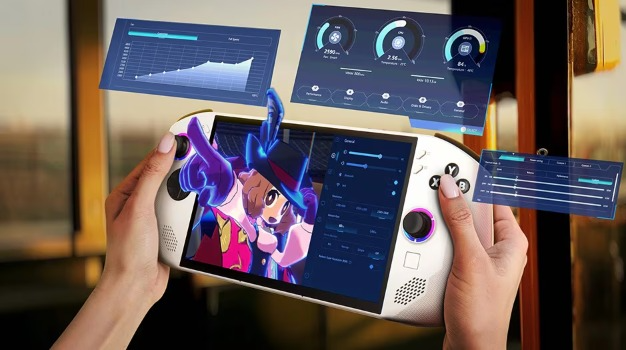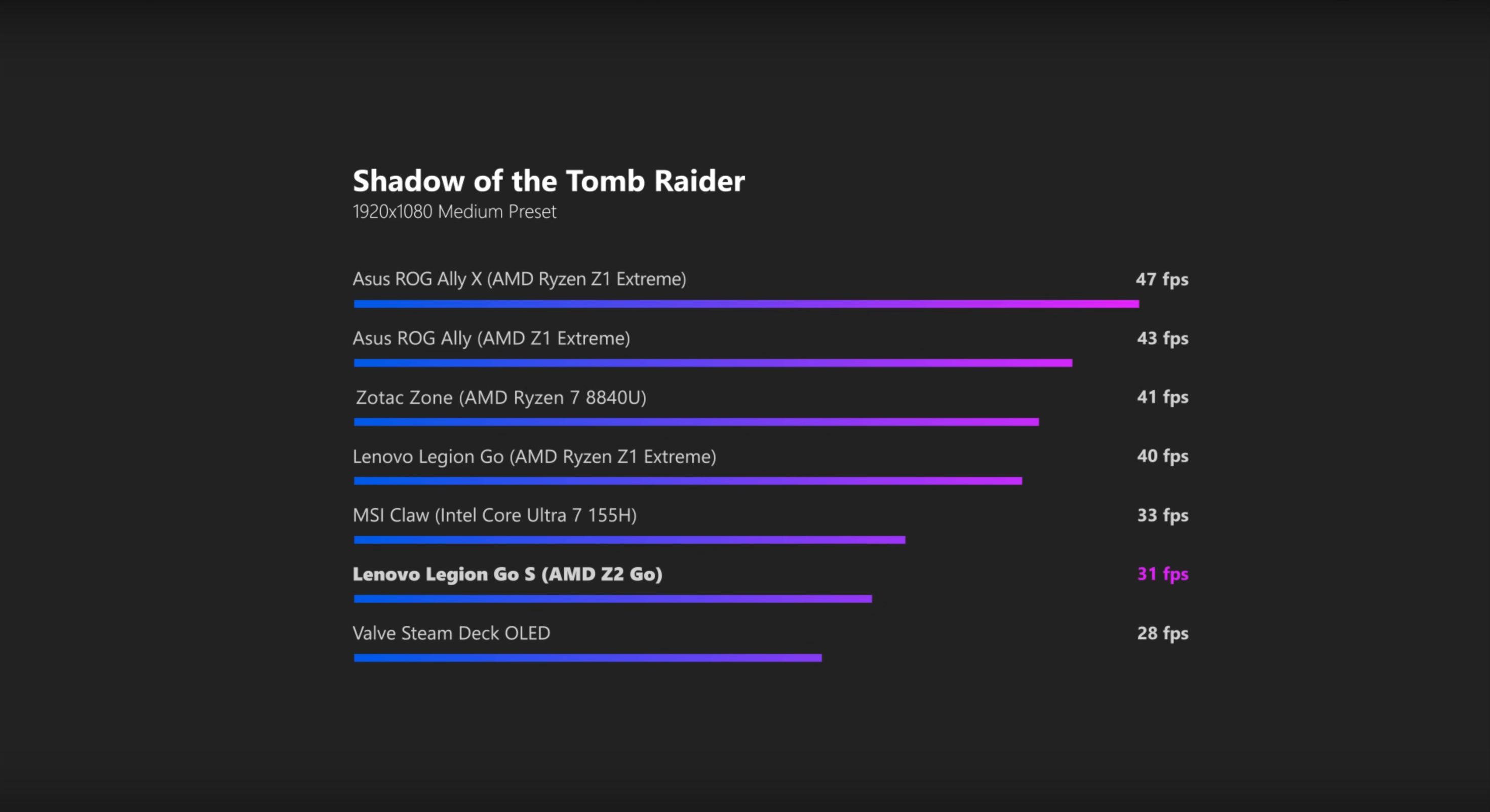The Lenovo Legion Go S could have blown the Steam Deck out of the water - if it wasn't for its high asking price

If there's one category of PC hardware that I've been particularly infatuated with lately, it would be handheld gaming PCs. The launch of the Steam Deck in 2022 paved the way for a whole host of competitors, notably from Asus and Lenovo with the ROG Ally and Legion Go.
Despite an ever-growing (and competitive) market, Valve's handheld has maintained its position as the most popular thanks to its affordability, performance, and SteamOS's ease of use.
While we await Lenovo's Legion Go successor (which is still a prototype), we've seen what the new Lenovo Legion Go S Z2 Go Windows 11 model ($729 / £649 / AU$1,170) has to offer. Powered by the new Ryzen Z2 Go processor, it's better than the Steam Deck in terms of performance (based on multiple in-game benchmarks), but is far more expensive.
It's important to note that the SteamOS version that Lenovo says will launch in May, starts at $499 which puts it in the same ballpark as the Steam Deck OLED ($549 / £479 / AU$899) - a far more tempting proposition for those searching for a true Steam Deck alternative compared to more expensive handhelds.
Lenovo also plans to launch a Z1 Extreme model (also seen in the original Legion Go and ROG Ally) which would likely outperform both the Legion Go S Z2 Go and Steam Deck OLED, but there's no word on a release date or pricing.
Despite this, I'm more sure than ever that the success of the Legion Go S will stem from the fact that this could be the first handheld gaming PC that offers better performance than Valve's Steam Deck, while also challenging it when it comes to value for money - a balance that has so far eluded handheld makers who seem to either make powerful handhelds that cost a fortune, or cheap handhelds that don't have enough power to play modern games.
The Z2 Go is hardly that much faster than the Steam Deck's processor

While I haven't had the privilege of testing the Lenovo Legion Go S myself, multiple benchmarks and reviews have hinted at game performance (as pictured above from Notebookcheckreviews on YouTube). We can see that the Z2 Go handheld is only just 10.1% faster than the Steam Deck OLED in Shadow of the Tomb Raider at 1080p medium graphics settings.
Sign up for breaking news, reviews, opinion, top tech deals, and more.
Similar results are also clear in the video on Cyberpunk 2077 at 1080p low graphics settings, with the Z2 Go managing 26.5 fps and the Steam Deck OLED hitting 25.0fps with FSR turned off, resulting in only a 5.8% performance difference.
While you'll likely get better results (in favor of the Go S) when turning the resolution down to 800p, it's not enough of a significant boost to justify choosing the device over the Deck.
The Windows 11 version is also around the same price as the original Legion Go - it may arguably be a weaker option in terms of its ergonomics and comfort, but its 8.8-inch screen and Z1 Extreme performance leave the Go S in the dust. With the device coming to gamers in the US this month, there will likely be plenty of discounts at different retailers for the original Legion Go, making it a much more tempting purchase.
Let's give Lenovo another chance, and wait for the SteamOS models...

At the moment, I can say that I don't think the current Windows 11 model of the Lenovo Go at $729 / £649 / AU$1,170 is even worth considering due to the minimal performance gains over the Steam Deck. You might as well save money and go with Valve's handheld, or save up a bit more for a handheld that offers a big leap in performance.
Depending on what configurations will be available, the Z1 Extreme option should outperform the original Legion Go (if it comes with 32GB of RAM) - but I'm willing to bet its price will be high.
If there's any device that can be a true Steam Deck killer, it would be the SteamOS model of the Lenovo Go, which starts at $499. It directly competes with the Steam Deck's OLED variant price-wise, but with slightly better performance. So, if you're like me and have been waiting for a PC gaming handheld to finally challenge the Steam Deck (and hopefully force Valve to give us the Steam Deck 2), then we could be in for a treat.
You may also like...
- Sony needs a bit of gentle encouragement with the PlayStation 5, and this rumored Steam console from Valve might be the perfect answer for that
- Nvidia's new DLSS 4 driver might be appealing, but you might want to avoid it for now - it's reportedly causing crashes across several games, potentially even BSoDs
- Nvidia and AMD are set for a showdown in March, if this rumor holds any truth - RTX 5060 Ti and 5060 reportedly launching next month

Isaiah is a Staff Writer for the Computing channel at TechRadar. He's spent over two years writing about all things tech, specifically games on PC, consoles, and handhelds. He started off at GameRant in 2022 after graduating from Birmingham City University in the same year, before writing at PC Guide which included work on deals articles, reviews, and news on PC products such as GPUs, CPUs, monitors, and more. He spends most of his time finding out about the exciting new features of upcoming GPUs, and is passionate about new game releases on PC, hoping that the ports aren't a complete mess.
You must confirm your public display name before commenting
Please logout and then login again, you will then be prompted to enter your display name.